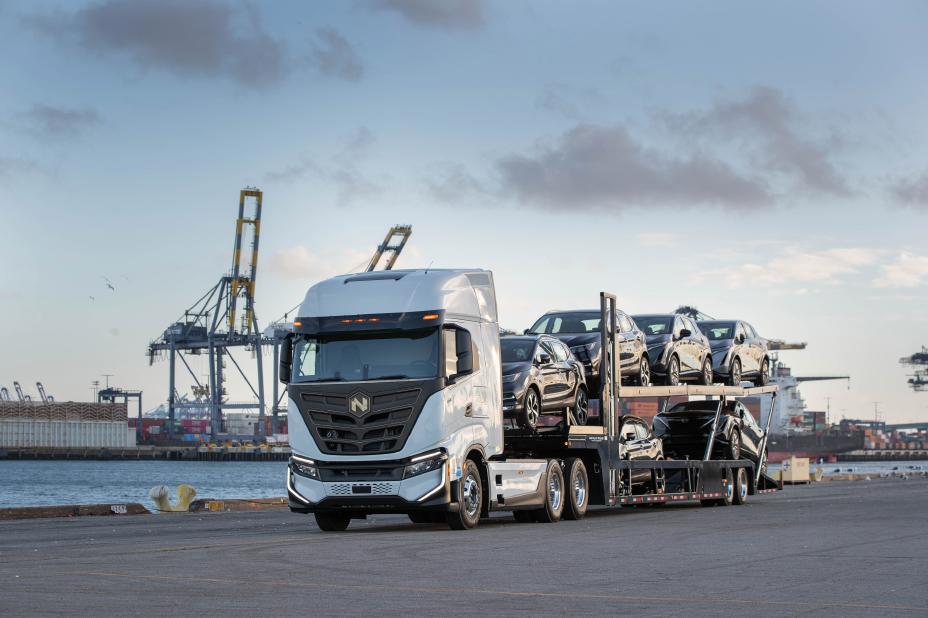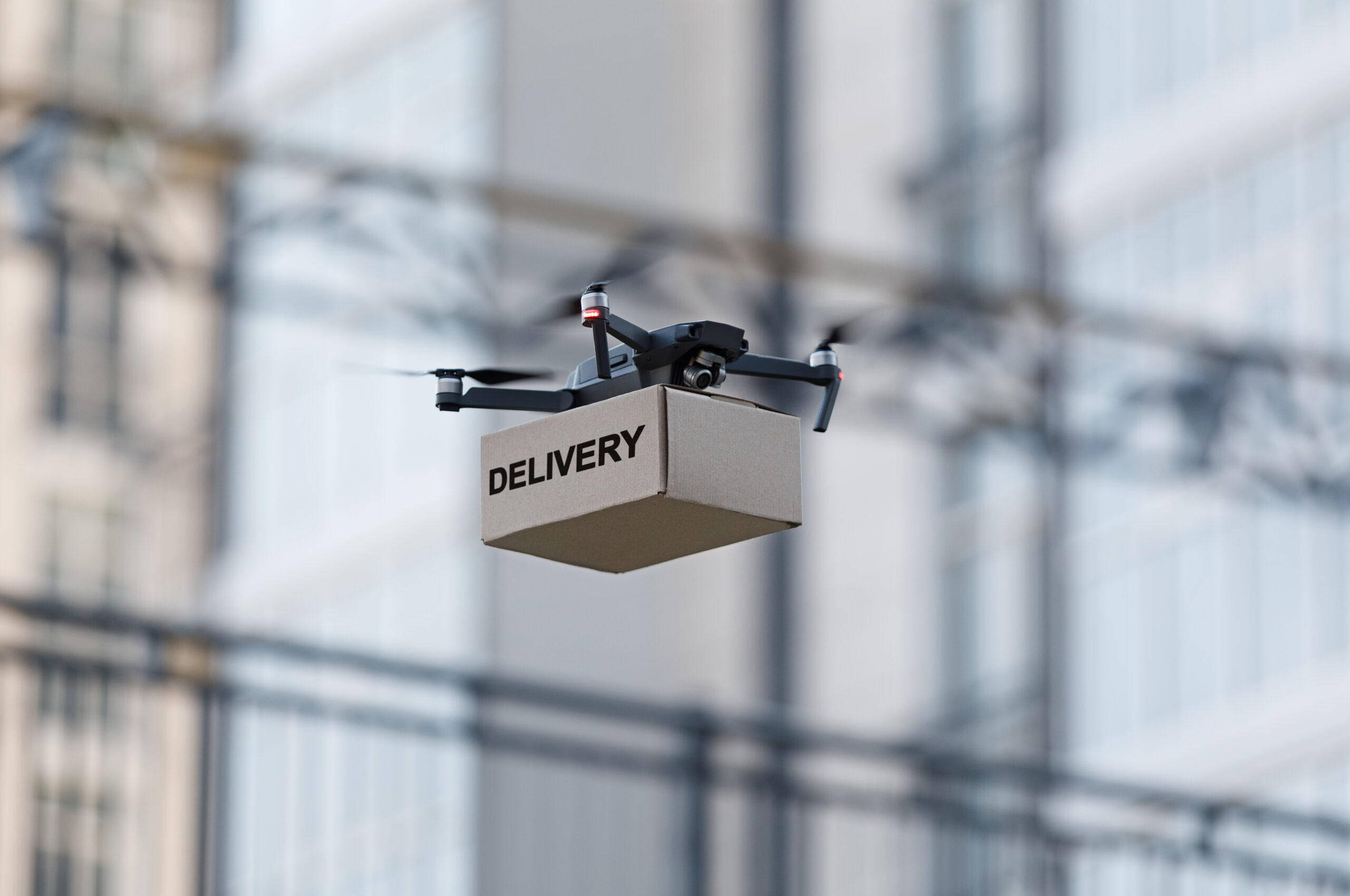A new month brings a new edition of our monthly electric vehicle and alternative drivetrain newsletter. February’s headlines feature the cost saving benefits of switching to electric vehicles, Nissan’s first round of etruck trials in LA, the ACEA calling on the European Commission to add more ambition to its CO2 targets, DPD’s progress towards using bio renewable fuel, and why the Antarctic’s first electrically powered exploration vehicle has had to adapt to climate change.
Transitioning to Electric Vehicles Could Save Logistics Companies Thousands
Research published by Webfleet has highlighted the potential savings organisations can make if they transition from using diesel powered vehicles to electric.
Data was collected from logistics companies around Europe that had made the switch for last mile deliveries. The results found that the participating companies saved on average (per vehicle per year):
- 5,665 litres of fuel
- £3,200 in maintenance costs & other related charges
- 15 tonnes of CO2 emissions.
Statistics from the Department for Transport emphasise the urgent need for decarbonisation within the transport sector as it still reigns as the sector that emits the largest amount of Greenhouse Gas emissions.
In 2022 the sector produced 24% of the UK’s total emissions, equating to 406 million tonnes of CO2e.
The study quantifies the cost saving benefits of electric vehicles, as well as the environmental impact that they have. It primarily allows for organisations to conduct a cost-benefit analysis to determine whether turning their fleet electric would be beneficial and represent a positive long-term investment that pays itself back over time.
Nissan Trials Electric Semi-trailers for Vehicle Deliveries to US

Nikola Motor etruck delivering Nissan vehicles in LA. Source: Nissan Newsroom
Nissan North America have started trials to test the use of Class 8 heavy-duty electric semi-trailers (etrucks) to deliver a range of Nissan vehicles, including the Nissan Ariya EV, to dealerships across California.
Nissan partnered with auto transport carrier specialists Avant Garde Auto Logistics (AGAL) to transfer the vehicles to Nissan dealerships within a 75-mile radius of the Port of Los Angeles, where the vehicles are imported to from their manufacturing plants in Japan.
There are currently two etrucks in operation, made by Kenworth and Nikola Motor respectively, and a further two etrucks are scheduled to be added later this summer. AGAL anticipates moving around 4,000 Nissan vehicles out of the port this year.
Data collected from the etrucks to analyse mileage, charging and vehicle volumes, and calculate reductions in carbon emissions, will inform Nissan’s future plans for expanding their etruck fleet and using BEVs for other logistics purposes.
“Building on the success of this trial with four trucks in the LA area, Nissan intends to expand to a longer trial with additional trucks in the area; that programme would run through 2026. Long term, lessons learned from these projects could allow for future expansion of BEV trucks into new geographic territories, larger truck fleets and different transportation needs.” – Nissan North America.
Nissan has also collaborated with logistics partner Wallenius Wilhelmsen to install charging points at the Port of Los Angeles to aid the operation.
ACEA Calls on the European Commission To Set More Ambitious CO2 Targets for Buses and Trucks

ACEA’s Commercial Vehicle Board Chairman and CEO of Volvo Group, Martin Lundstedt. Source: ACEA
In response to the European Commission’s recent proposal to introduce new truck and bus CO2 standards, the European Automobile Manufacturers’ Association (ACEA) has encouraged stakeholders to add more ambition to their CO2 targets, and support it with improved charging infrastructure. This is in addition to improved incentives and a better carbon pricing framework in order to fast track Europe’s progression towards net zero emissions.
The ACEA estimates that 400,000 zero-emission trucks would have to be in operation by 2030, and 100,000 zero-emission trucks would have to be registered annually over the same period in order to see a 45% reduction of CO2 in the atmosphere. The ACEA also contend that to supplement this expansion 50,000 publicly-accessible chargers would have to be functional by 2030, with the majority (35,000) being fast chargers.
“We are ready to deliver, however, reaching -45% already by 2030 is highly ambitious. It would require equally ambitious action by policymakers to ensure that the other players in the transport and logistics value chain deliver at the same time.” – Martin Lundstedt, ACEA’s Commercial Vehicle Board Chairman and CEO of Volvo Group.
DPD to Switch All Diesel HGVs to Renewable Biofuel by 2024

DPD has announced that they are progressing towards switching its entire diesel powered HGV fleet to using renewable biofuel Gd+ HVO. The advanced hydrotreated vegetable oil (HVO) that will be used to power their vehicles is made from renewable feedstocks. It can be readily used in any diesel engine without the need for modifications, making the transition cost-effective and seamless for DPD.
The transition has been successful so far – 1,600 of DPD’s HGVs are now powered by the renewable biofuel, equating to 60% of their fleet. According to DPD this reduces their emissions by 70,282 tonnes when compared to emissions statistics captured by the company in 2021. The remaining vehicles are scheduled to complete the transition by the end of the year.
Justin Pegg, Chief Operating Officer at DPD highlighted his delight at their progress so far:
“This is a very significant step in the journey to decarbonising our entire fleet and achieving our aim of being the most sustainable parcel delivery company in the UK. While we are well on the way to electrifying our delivery van fleet, the HGV linehaul fleet has always been a very different challenge. We have assessed a range of options and it is clear now that this is the most effective and practical way to make a real difference. While there may be different solutions in years to come, we must start this process now by making our existing vehicles significantly cleaner.”
Details on all of DPD’s sustainability initiatives can be found on DPD’s dedicated sustainability website ’DPD green’. DPD have ambitious plans for decarbonising their fleet – they’re hoping to have 4,000 electric vehicles on the road in the UK by the end of 2023.
Antarctica’s Only Electric Exploration Vehicle Has Been Modified Due To Climate Change

The Venturi Antarctica in action. Source: Venturi
To add context to the severity of the current climate situation, the world’s first electrically powered exploration vehicle, the Venturi Antarctica, has been upgraded in order to adapt to warmer temperatures on the continent.
Since being deployed on the continent at the Princess Elisabeth Antarctica research centre in 2021, the temperature has increased dramatically. Initially built to withstand temperatures of -50°C, the exploration vehicle has been forced to adapt so it can function in temperatures of -10°C, which are becoming more frequent.
The Venturi Antarctica has had two cold air intake systems and an air ventilation system installed to deliver cooler internal temperatures to the vehicle. The sprockets, the collection of mechanical wheels with teeth that rotate and engage with the vehicle’s tracks, have also been redesigned after it was discovered that an insignificant quantity of snow was sticking to them, creating unwanted vibrations.
The scientists using the Venturi Antarctica have significantly reduced the mileage the vehicle undertakes per trip and over the course of a year due to the consistency of the snow. Despite covering 500 kilometres in its first summer at the Princess Elisabeth Antarctica research centre, the vehicle is now only used for journeys under 40 kilometres, and further adaptations are in the pipeline to increase the vehicle’s durability.






